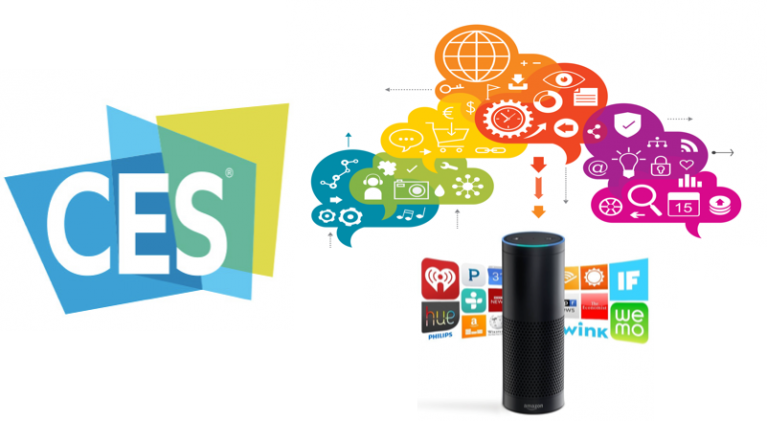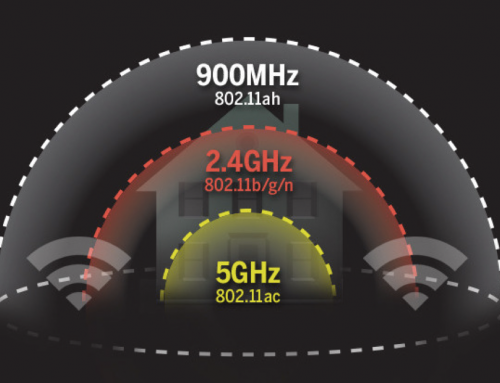Once again, CES was huge, fun, and a great checkpoint on the penetration of new technologies and innovations into products. Once again, we saw important innovations, some really great products, as well as a few that left us scratching our heads. From smart home appliances, to drones, to gaming, to virtual reality, to cars, to computers, CES remains a great gage of product advancement and industry transformations.
Last year we saw Internet of Things in the spotlight. In 2017, IoT was still a centerpiece, but this year novelty was not enough and IoT products needed to pass a higher bar and create real value. Smart kitchens that would talk to the coffeepot and smart washing machines that would order soap when you run low did not yet seem to ring the bell. Broadly connected smart homes, with smart thermostats, automatic lighting control, security solutions and safety devices all integrated with easy to use controllers, like Amazon’s Alexa, definitely felt more compelling. But even these felt like “early adopter” solutions. Still, looking forward, this is all getting more and more interesting.
The very fact that device connectivity is on a path to ubiquity is a very big deal. An important reason this all still feels a bit thin is that the story is incomplete. Remembering Metcalfe’s law, the value of a network is proportional to the square of the number of connected users of the system. This surely applies to IoT. Looking forward just a bit, this all becomes far more compelling. Today, IoT solutions exist more or less in isolation. But this is already changing fast. Soon, our renewable energy devices will talk to our electric cars and energy storage devices. Our houses will be connected to the grid with smart rate plans designed to save us money. And, these consumer products that today may seem a bit frivolous will seamlessly fit into our habits with intuitive automation tools.
One clear star of CES this year was Amazon’s Alexa. Alexa, at first look, is a nifty entertainment and information assistant to put in the kitchen, and the Alexa Dot is its little sister. But, the value of Alexa as an IoT hub, controller and as a platform for new service creation was very clear at the show. Google Home, Apple Homekit, and Samsung ARTIK also provide this kind of smart home nexus capability, but Alexa is way ahead. Multiple smart device providers have already integrated with Alexa. To enable this, Amazon, with its advanced IoT toolset has made it very easy to create and publish Alexa applications called “Skills”. Product developers, or even individual users can write and publish Skills that interwork with Alexa and Dot, and indirectly interwork with other devices in the network. The importance of this kind of device / application / cloud integration and ecosystem driver cannot be overstated and Amazon has a clear lead here.
Other indicators of growing IoT maturity at the show were some very worthwhile and “mostly complete” end to end solutions. We saw IoT solutions to integrate legacy building control systems to IoT back end intelligence. We saw some very interesting retail solutions to track consumer behavior in stores. We also saw multiple augmented reality platforms to improve field or factory worker productivity with on-demand / in-context / how-to guides. Of particular interest were more and more IoT closed-loop control systems, with sensors detecting a condition, local or cloud processing to identify an optimal response, and IoT controlled actuators taking action to address the condition. Significant advancement in sensors and sensor integration tools was apparent, and Bosh and Texas Instruments, in particular, had put together highly integrated and easy to implement multi-sensor solutions. Discussions with sensor and IoT edge solutions also showed a high appreciation of the importance of very low power solutions for long-life IoT battery based solutions. This is critical for the IoT mass market, and especially for Industrial IoT applications.
Last year we also highlighted the importance of IoT standards. In that there are still too many standards, this is still a problem. But, the availability of very solid working hardware and software for Zigbee, 802.11, 802.15.4 and LoRa is making it easier for product suppliers to deploy several interfaces to address their target ecosystems. On the connectivity software side, MQTT, CoAP, and REST solutions are robust and available as open source. Further, the major IoT cloud providers like IBM, AWS, Microsoft are investing heavily in providing the software tools needed to make it easier to securely connect devices to their services. So, standards are still an issue, but it is getting easier to build reliable IoT networks.
At Juxtology, we remain focused on the Industrial Internet of Things. While CES is still about “consumers” the show offered great insights into the advancement of underlying IoT platforms, standards and building blocks. While the Industrial IoT market is growing rapidly, putting together complete industry solutions remains hard and this is an inhibitor to growth. This is partly because Industrial IoT still has a connectivity problem. While this will be a huge market, the diversity and uniqueness of edge connectivity needs drives smaller volumes, making investment risky. But at this year’s CES, we could see that the IoT “early money” in consumer markets is paying some of the bills for the technology advancements we need in industrial markets.
To reach “escape velocity” in Industrial IoT, we need an end to end technology stack that enables “mass customization”. With a well-established set of building blocks and tools it will be much easier to build the wide varieties of connectivity that will unlock the huge economic impact forecast for Industrial IoT. With a solid foundation of technologies, tools and design patterns, we can afford the mass customization approach to create the specialized asset performance management, process optimization, automation and business systems integration that diverse industry segments need.
From this perspective, looking under the hood of CES IoT products, technology, software and solutions provides us all a lot of insight. There is no doubt that a big step forward for IoT was on display at CES. With only a bit more work we will have the tools in hand to deliver the fast innovation and mass customization we need in Industrial IoT.







Leave A Comment